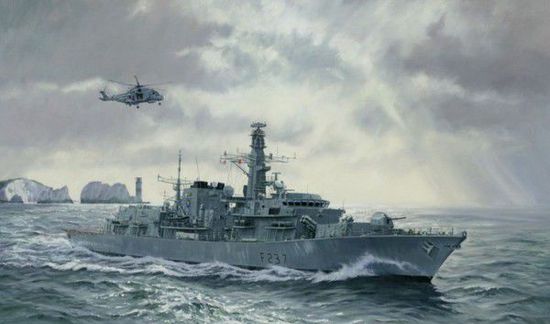Yesterday, the Royal Navy's HMS Mersey conducted a test of a low-cost 3D-printed drone off the south coast of England. The sleek, jet-shaped drone weighs approximately 3 kilograms and was launched using a 3-meter-long catapult. After takeoff, it followed a pre-programmed flight path for five minutes before landing on a pebble beach. Notably, the main structural components were 3D printed onshore and then assembled aboard the ship, showcasing the potential for rapid deployment in maritime operations.

The experiment aimed to demonstrate that a one-time-use, inexpensive drone could hold significant military value in certain scenarios, allowing crews to quickly adapt to new tasks. Geoff Hayward, head of drones at the British Maritime Operations Center, explained that factory-produced drones lack flexibility, while customized versions are too costly. 3D printing offers an affordable solution for creating dedicated drones tailored to specific missions.
Before the test, the drone’s wind resistance and stability had not been fully tested. However, the military-backed 3D printing company involved has already started exploring ways to apply this technology in civilian sectors.
![动图]廉价3D打å°æ— 人机进入海军](http://i.bosscdn.com/blog/10/19/44/5Q9-1.gif)
Screen captured by Sulsa drone lens
The drone, named "Sulsa," has a wingspan of 1.5 meters and is powered by a propeller. It was developed by the University of Southampton. Four major parts were 3D printed using laser sintering of nylon powder. Key control surfaces like the rudder and aileron were also made via 3D printing, while electronic components were pre-fabricated. The finished drone can be equipped with sensors, radar, or even small payloads, and it can reach speeds of up to 160 km/h.
Although drones have been used by navies before, previous models were too expensive for large-scale deployment. The Sulsa, however, costs just a few thousand dollars—far less than the millions spent on traditional military drones. However, its battery life is limited to about 40 minutes, which isn’t enough for long-range missions like tracking pirates. But since it’s so cheap, losing one isn’t a big deal—another can simply be deployed.
Researchers envision a future where military units carry 3D printers, raw materials, and sensors to sea, allowing them to produce custom parts on demand. While printing a full drone takes several hours, the cost-effectiveness makes it appealing for certain operations, even if speed is a limitation.
(Editor)
Round Cotton Pads,Stitched Pure Cotton Round,Customized Cotton Rounds,Pure Cotton Pads
COTTONWHISPER (TAIZHOU) DAILY PRODUCTS CO.,LTD , https://www.cottonwhipershop.com